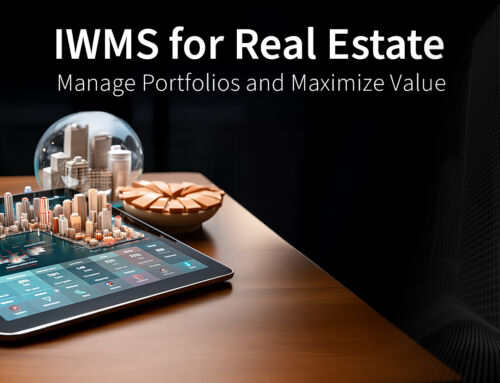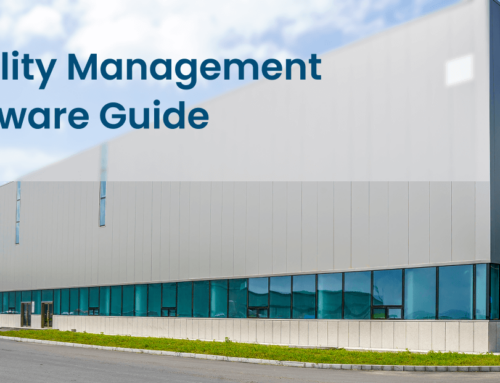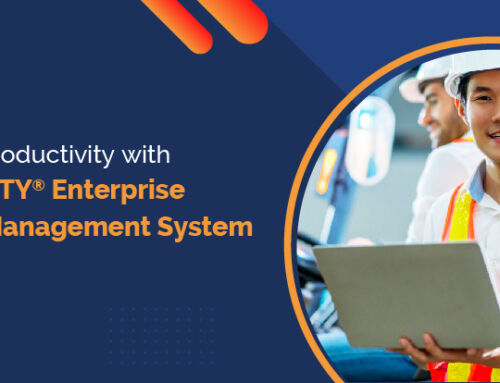Choosing the right facility management software for Indian facilities involves assessing your business’s needs to optimize maintenance, space usage, and compliance while ensuring scalability. The ideal software should streamline operations and reduce costs. It should also create the conditions for sustainable growth by being flexible enough to accommodate evolving business requirements.
This guide will help Indian businesses choose the best facility management system (FMS) by comparing types, key features, pricing, and selection criteria.
Facility management in India has outgrown the old “fix it when it breaks” mindset. Today, it’s about much more: optimizing space, streamlining operations, cutting rising costs, ensuring compliance, and driving sustainability goals.
Reactive maintenance costs 30–40% more than preventive strategies, and studies show nearly 40% of office space remains underutilized, draining budgets. Security gaps, scattered assets across sites, and compliance penalties make operations even more complex.
In this blog, we will also explain:
- The main types of FMS
- When to adopt
- Key features that deliver ROI
- The Top FMS Solutions in India for 2025
- Common mistakes to avoid when purchasing
5 Types of Facility Management Software and How to Choose the Right One?
Software built for facility management is the backbone of many industries. It caters to various facility needs and improves efficiency. For Indian organizations, the most relevant types include:
- Integrated Workplace Management Systems (IWMS):
Unifies asset, space, energy, and workplace management. Ideal for large enterprises and multi-site organizations, IWMS streamlines decisions on real estate, energy, and compliance.
- Computer-Aided Facility Management (CAFM):
Focuses on space planning and asset tracking, perfect for mid-sized organizations and property management. CAFM enhances space utilization and scheduled maintenance.
- Enterprise Asset Management (EAM):
Manages the lifecycle of assets from procurement to disposal. Common in manufacturing and healthcare, EAM ensures asset reliability and regulatory compliance.
- Computerized Maintenance Management Systems (CMMS):
Specializes in preventive maintenance and work orders. Best for SMEs and manufacturing plants, CMMS reduces downtime and streamlines maintenance tasks.
- Workplace Experience (WX) Platforms:
Supports hybrid work environments with features like desk booking and room scheduling. Ideal for corporate offices and co-working spaces, WX enhances employee satisfaction and space flexibility.
When selecting a Facility Management System, it’s essential to match the platform with your business goals. An IWMS may suit enterprises needing end-to-end control, while a CMMS can be sufficient for organizations focused mainly on maintenance and assets.
Explore our blog on ‘Navigating CAFM, CMMS, EAM, and IWMS‘ to better understand the differences between various types of facility management software.
How to Choose the Best Facility Management System for Your Business in India
Now that you understand the types, let’s see how to evaluate them in practice. Selecting a Facility Management System in India is a long-term decision. Instead of relying on vendor brochures, adopt a structured evaluation approach:
- Define Business Objectives:
Clarify whether your goal is to reduce downtime, lower energy bills, improve compliance, or enhance overall workplace experience. This ensures the system aligns with measurable outcomes.
- Document Functional Requirements:
List essential features separately from “nice to haves”. This helps prevent scope creep and overspending.
- Check Integration & Scalability:
Ensure the FMS integrates seamlessly with your ERP/CRM systems, GST-compliant finance tools, HRMS platforms, or IoT devices. Scalable solutions future-proof your investment as operations expand.
- Evaluate Vendor Support & Compliance:
: Look for ISO-certified vendors (ISO 41001 for Facility Management, ISO 27001 for Information Security, ISO 50001 for Energy Management) and strong local customer support. Request case studies or client references before making the final choice.
- Assess ROI, Not Just Cost:
Don’t focus only on upfront pricing. Consider long-term savings. For example, a manufacturer reducing downtime by 20% with preventive maintenance can save ₹20–30 lakh annually, far outweighing initial costs.
A systematic approach ensures you select a solution that delivers measurable ROI, supports compliance, and grows with your business.
Is your organization in need of a Facility Management System? Book a free consultation to identify the right facility management solutions for your business.
Industries and Organizations that Benefit Most from Facility Management Software
The following types of organizations commonly utilize a comprehensive software solution for facility management. The specific features and functionalities they prioritize may vary based on their size, industry, and operational requirements.
- Corporate Offices:
Optimizes maintenance and space usage across large offices to lower costs and improve coordination.
- Manufacturing Units:
Ensures timely maintenance and real-time asset tracking to keep production lines running efficiently and minimize downtime.
- Hospitals & Healthcare Facilities:
Helps with regulatory compliance, maintenance of medical equipment, and ensures safe, efficient patient care, improving overall healthcare delivery.
- Real Estate & Property Management Firms:
Assists in managing multiple properties, tracking maintenance requests, and optimizing space usage, ensuring seamless property management and tenant satisfaction.
- Business Parks:
Streamlines operations across multi-building campuses by centralizing maintenance, energy management, and tenant services.
- Global Capability Centers (GCCs):
Streamline operations across large multi-building campuses, manage hybrid workspaces, and ensure compliance with global corporate standards.
In addition to the organizations mentioned, industries such as retail chains, hospitality, and data centers also benefit greatly from adopting a digital facility management platform. Educational and government institutions, facility management companies, financial institutions, airports, and similar facilities can also see significant advantages.
FMS platforms adapt to unique sector-specific needs—but the ultimate goal remains the same: improving efficiency, reducing costs, and modernizing facility operations.
To see how FMS has transformed businesses like yours, explore our case studies and learn how leading companies are achieving significant results.
7 Ways the Right Facility Management System Solves Common Organizational Challenges
Once you’ve identified the right type, the next step is to ensure it tackles the real issues your organization faces daily. The best Facility Management System does not just offer features; it delivers outcomes. Here’s what you should ask before choosing your workplace management software:
- Is Your FMS Improving Space Utilization and Cutting Real Estate Costs?
Poorly utilized real estate space and facility conflicts can disrupt smooth facility operations. According to JLL studies, 30% of office spaces are underutilized. The best software for facility management should give you visibility into occupancy, ensure conflict-free bookings, and help you adapt layouts. This way, every square foot works harder for your business.
- Is Your FMS Reducing Equipment Downtime Before It Hurts Operations?
Unplanned breakdowns interrupt productivity and inflate repair bills. The right platform for asset and maintenance maximizes asset health and avoids costly disruptions with lifecycle tracking and proactive maintenance.
- Is Your FMS Automating Workflows to Reduce Maintenance Costs?
Manual follow-ups and missed tasks frustrate both staff and occupants. Automated work orders and smart scheduling can ensure faster response times, lower maintenance costs, and offer a more reliable service experience.
- Is Your FMS Slashing Energy Waste While Meeting Sustainability Goals?
Rising energy costs and sustainability targets put pressure on facilities. IoT-enabled monitoring can spot anomalies. It can cut energy bills by 10–20%, optimize consumption, and help you achieve both cost savings and green certifications.
- Is Your FMS Strengthening Security Without Slowing People Down?
From visitors to tenants to contractors, unmanaged access creates risks. Digital check-ins, automated approvals, and dynamic patrols make entry seamless for the right people while keeping facilities safe and compliant.
- Is Your FMS Fixing Service Gaps Before They Erode Trust?
When tickets go unresolved or feedback is ignored, occupant confidence declines. A centralized helpdesk ensures issues are logged, tracked, and resolved quickly—boosting satisfaction and transparency.
- Is Your FMS Helping You Move from Reactive to Proactive Management?
Guesswork and late interventions are no longer acceptable. AI- and IoT-enabled FMS solutions give early insights—flagging potential failures, optimizing resources, and enabling smarter, data-driven decisions.
Top Facility Management Systems (FMS) Used by Indian Organizations in 2025
India’s facility management software market includes both global vendors and Indian solutions. Here are some top facility management software used by Indian organizations (this is not a ranking):
eFACiLiTY®
A comprehensive IWMS developed in India by SIERRA ODC. It offers modules for enterprise-level space, facility, and asset management. It helps streamline operations, improving safety, compliance, energy efficiency, and sustainability.
QuickFMS
A cloud-based platform offering space utilization, visitor management, and asset tracking. Known for flexible deployment options and scalability for medium-to-large enterprises.
IBM Maximo
A global enterprise-grade solution with strong IoT and AI capabilities. Preferred by large industries such as utilities, manufacturing, and transport.
Planon
Focused on smart buildings and real estate, Planon unifies building data, service workflows, and sustainability metrics. Popular with property managers and corporate real estate firms.
MaintainX
A mobile-first, user-friendly CMMS that streamlines work orders and asset reliability. Favored by mid-sized organizations seeking ease of use and rapid adoption.
Common Mistakes to Avoid When Selecting a Facility Management System
Choosing the wrong Facility Management System can result in wasted resources, inefficiencies, and compliance risks. Here are some of the most common mistakes businesses make — and how to avoid them.
1. Not Defining Clear Objectives
Mistake: Selecting a system without clarity on goals such as cost savings, improved asset visibility, or sustainability tracking.
How to Avoid: Define measurable objectives before evaluating vendors.
2. Focusing Only on Price
Mistake: Choosing the cheapest option without assessing scalability and long-term ROI.
How to Avoid: Look at the total cost of ownership (TCO) and ensure the system grows with your organization.
3. Overlooking Integration & Mobile Accessibilit
Mistake: Selecting an FMS that does not integrate with ERP/CRM systems or lacks mobile access for field staff.
How to Avoid: Ensure the system offers APIs, seamless integrations, and mobile-first accessibility.
4. Ignoring User-Friendliness
Mistake: Opting for overly complex systems that reduce adoption.
How to Avoid: Prioritize intuitive interfaces and training support.
5. Neglecting Vendor Support & Training
Mistake: Underestimating the need for onboarding and ongoing vendor support.
How to Avoid: Choose providers that offer training, local support, and timely system updates.
6. Failing to Consider Data Security & Certification
Mistake: Overlooking compliance, data security, and international standards.
Why It Matters: Non-compliance or poor data security can lead to penalties and reputational risks.
How to Avoid: Ensure the FMS complies with recognized certifications such as ISO 41001 (Facility Management) and ISO 27001 (Information Security).
FAQs
An FMS is a digital platform used to manage facility operations such as maintenance, asset tracking, energy usage, and space planning. It helps businesses optimize resources and improve operational efficiency.
Most FMS solutions integrate easily with ERP, CRM, and other platforms. Ensure the FMS you select supports integration with your existing systems.
FMS implementation cost in India varies depending on the deployment type and features. On average:
- Cloud-based FMS for SMEs: ₹500–₹1,500 per user/month
- Enterprise IWMS: ₹15–40 lakh (annual license + implementation)
Customization, integrations, and support can increase costs further.
ROI should be evaluated against long-term savings from reduced downtime, space optimization, and energy efficiency.
Mainly Global Capability Centers (GCCs), IT parks, business parks, government facilities, large manufacturing plants, and healthcare networks sectors with scale, compliance needs, and multi-site operations.
- FMS: Broad platform covering space, assets, maintenance, compliance, and workplace services.
- CAFM: Focused on space planning and scheduled maintenance.
- CMMS: Primarily for maintenance tasks like work orders and preventive upkeep.
In scope: CMMS < CAFM < FMS/IWMS.
Conclusion – Choosing the Best Facility Management System for Indian Organizations
For Indian organizations, facility management is no longer just about maintaining assets. It is about helping the facility achieve cost efficiency, regulatory compliance, and sustainability.
By aligning business objectives with the right technology and selecting features that truly matter, you can make a smarter choice. With careful vendor evaluation, a Facility Management System can transform your facilities into a strategic driver of resilience and scalability.
Still unsure which facility management system fits your goals? Schedule a free consultation with our experts to find the best FMS for your business.













